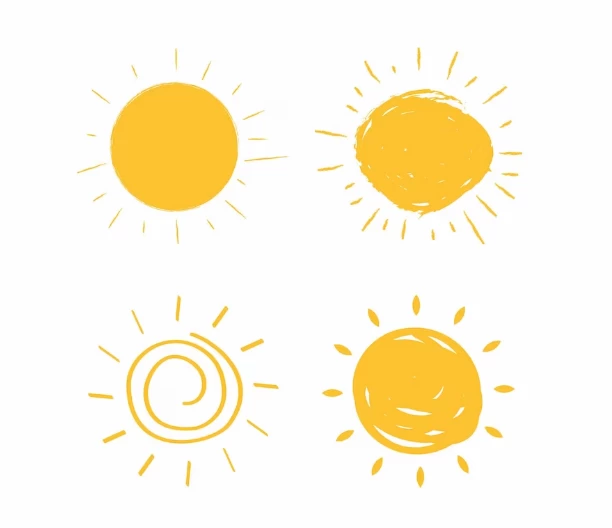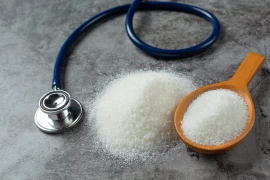
Sunstroke
- Sunstroke
- What are the Symptoms of Sunstroke?
- What Should You Do for Sunstroke?
Sunstroke is a condition that occurs as a result of elevated body temperature and weakened thermoregulation (the body's mechanism for maintaining temperature balance). This condition typically occurs in extreme hot weather conditions, especially when combined with high humidity levels. Sunstroke is characterized by the body temperature rising above 40°C (104°F) and can be a serious condition requiring urgent medical intervention. It usually affects individuals who are excessively exposed to the sun. The body normally regulates its temperature through sweating. However, in extremely hot weather conditions, sweating may be insufficient to regulate temperature. In such cases, the body becomes susceptible to overheating and weakened thermoregulation, leading to sunstroke.
What are the Symptoms of Sunstroke?
Sunstroke manifests as a result of elevated body temperature and weakened thermoregulation. The symptoms of sunstroke can include the following:
- Dizziness and lightheadedness: A person experiencing sunstroke may feel dizzy or lightheaded. These symptoms are associated with the elevation of body temperature and impairment of brain functions.
- Severe headache: Sunstroke can cause severe headaches. These headaches are typically throbbing or pressing in nature.
- Loss of appetite and nausea: Individuals with sunstroke may experience loss of appetite and nausea. Excessive heat and changes in the body can lead to feelings of nausea and loss of appetite.
- Rapid heartbeat and breathing: In cases of sunstroke, the heart rate may increase, and breathing rate may become accelerated. The elevation of body temperature can increase stress on the heart and respiratory system.
- Redness and dryness of the skin: Sunstroke can cause redness and dryness of the skin. The skin may feel hot and become dry due to a lack of sweating.
- Lack of sweating: During sunstroke, a person's ability to sweat may be reduced or completely absent. Sweating is the body's mechanism for regulating temperature, and this mechanism can be affected during sunstroke.
- Muscle cramps and weakness: Sunstroke can lead to muscle cramps and weakness. Imbalances in electrolytes and elevated body temperature can affect muscle function.
- Loss of consciousness or fainting: In severe cases, sunstroke can result in loss of consciousness or fainting. Rapid increase in body temperature can affect brain functions and lead to loss of consciousness.
The symptoms of sunstroke can vary from person to person and can vary in severity depending on the situation. These symptoms can occur in individuals excessively exposed to the sun in extremely hot weather conditions. If someone is suspected of having sunstroke, they should be immediately moved to a cool place and seek medical assistance.

What Should You Do for Sunstroke?
Here are the actions to take in the case of sunstroke:
- Move the person to a cool place: If someone is suspected of having sunstroke, immediately remove them from the sun and transport them to a cool place. Help the person cool down by moving them to a shaded area or indoors where the body temperature can decrease.
- Apply cooling methods to lower body temperature: It is important to rapidly lower the person's body temperature. You can use wet towels or cloths to wipe the person's body or moisten them with cool water. Cooling the areas where blood vessels are located, such as the neck, wrists, inner elbows, and groin, can be effective. However, avoid using ice-cold water or ice, as excessive cold can cause other problems in the body.
- Provide fluid replacement: When body temperature rises due to sunstroke, sweating increases, and the body loses water. Therefore, it is important to provide fluid replacement to the person. Cool or lightly salted beverages can be given to replenish the lost water and electrolytes through sweating. Water, electrolyte drinks, or fruit juices can be preferred, while alcoholic and caffeinated beverages should be avoided.
- Rest and comfort the person: Provide the person experiencing sunstroke with ample rest opportunities. Create a soothing and comforting environment. Help the body rest by limiting movement and activity.
- Seek medical assistance: Sunstroke is a serious condition that may require medical intervention. If the symptoms are severe or if the person has experienced loss of consciousness, seek immediate medical attention. A qualified healthcare professional will evaluate the condition and provide appropriate treatment.
- Take preventive measures: It is important to avoid excessive exposure to the sun in extreme hot weather conditions to prevent sunstroke. Take precautions such as wearing wide-brimmed hats, sunglasses, and protective clothing, using sunscreen to protect the body, and drinking plenty of water. Additionally, limiting physical activities and staying in cooling environments are important in extremely hot weather.
Sunstroke is a serious health concern and requires proper treatment. By implementing the above steps, you can intervene quickly and protect the person's health.
In conclusion, sunstroke is a condition that should be taken seriously in extreme hot weather conditions. It occurs as a result of elevated body temperature and weakened thermoregulation. The symptoms of sunstroke can be severe and may require urgent medical intervention. Therefore, it is important to avoid excessive exposure to the sun in extremely hot weather conditions and take appropriate precautions.






